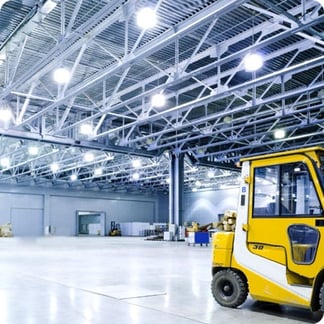
Don’t fall into the trap of being misconceived about LEDs! You may hear people say, “LED’s cost too much! LED Light quality isn’t good, LEDs generate no heat, LEDs last forever, or I know that prices are going to go down on LEDs, so I am going to wait!” Well don’t be tricked! Here are some fun facts below to brighten you up.
Myth #1: LED systems cost too much
FACT: The initial fixture cost may look higher for some LED lighting solutions than incandescent and fluorescent lighting solutions. But, you must keep in mind that the initial fixture cost does not account for the total cost of owning, operating, and maintaining a lighting system. LED lighting fixtures avoid the maintenance and materials costs because of their LONG life!
And since LEDs consume far less energy, annual power costs can be reduced by up to 80%. The total cost of LED lighting systems, therefore, can be significantly lower than conventional systems. In fact, payback on LED lighting solutions can often be realized in less than three years, and not to mention, our LEDs come with an excellent warranty (5-10 years).
Myth #2: LED light quality is poor
FACT: Two important measurements of white light quality are correlated color temperature (CCT) and color rendering index (CRI).
CCT describes whether white light appears warm (reddish), neutral, or cool (bluish). The standard definitions of CCT allow a range of variations in color that can be readily discerned by viewers even when the CCT value is the same. Ensuring color consistency is a major concern of LED manufacturers. Leading LED lighting manufacturers use various LED selection schemes (binning) to ensure color consistency from fixture to fixture.
On a scale of 0 (worst) to 100 (best), CRI measures the ability of a light source to reproduce the colors of objects faithfully in reference to an ideal light source — the sun, for example, or an incandescent lamp. Most office, retail, educational, medical, and residential spaces require a minimum CRI of 70 – 90. Many white-light LED lighting fixtures available today achieve CRIs of 80 or better, comparable to many CFL lamps, quartz metal halide lamps, and some cool white fluorescent fixtures sufficient for the vast majority of applications.
Myth #3: LEDs generate no heat
Myth 4: LEDs last forever.
FACT: With the proper thermal design, LEDs can achieve 60,000+ hours of life while maintaining 70 percent of the original light output. LEDs are designed to provide more than 10 years of maintenance-free service.
Myth 5: LED prices will go down, so it pays to wait.
FACT: It does not pay to wait. It does pay to act. Waiting for LED fixture prices to drop will cost you money. The energy savings from upgrading a facility's lighting to LEDs far exceeds any incremental price declines in LED-based fixtures.

The major factors associated with industrial lighting are up-front costs and energy use, making the frequently cited comparison between computer processing chips and LEDs inappropriate. Yes, LED chips are declining in price, but much of the cost of LED lighting is in the system that is built around that chip, so the potential chip price decline affects only about a third of the fixture.
A quick glimpse at a typical facility's operating budget shows that lighting is one of the largest energy loads. By reducing energy usage by 50% to 90% (depending on the application and manufacturer), LEDs payback in energy savings much more than could ever be accrued through incremental LED price declines. If anything, energy's upward price trend makes waiting even more costly.
Using the same $0.10/kWh rate, for example, a single 6-lamp T8 fixture typically consumes $174 in lighting-related energy costs per year while an intelligent LED fixture consumes just $27. This results in a net savings of $147 per year (not including the additional daylight harvesting, maintenance, and/or refrigeration savings associated with intelligent LEDs), meaning the cost of an LED fixture would have to drop dramatically in a single year to make waiting worthwhile.
Get a Free LED Lighting Consultation!
You may also be interested in reading:

